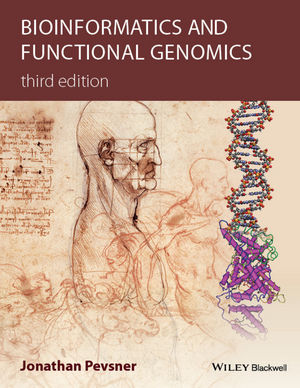
Understanding Bioinformatics
After reading this post, you should read Guidance or Guidance.
📚 Unlocking the Secrets of Bioinformatics: An Introduction to 'Understanding Bioinformatics' 🧬
If you're diving into the fascinating world where biology meets data science, 'Understanding Bioinformatics' by Marketa Zvelebil and Jeremy O. Baum is your ultimate guide. This book is an invaluable resource for students, researchers, and anyone interested in the computational analysis of biological data.
🌍 A Comprehensive Overview of Bioinformatics 🌏
The book offers a thorough introduction to bioinformatics, combining foundational principles with practical applications. It explores the intersection of biology, computer science, and statistics, providing readers with the tools and knowledge to understand and utilize bioinformatics effectively.
🔬 Key Topics Covered 🔬
In 'Understanding Bioinformatics,' readers will delve into a wide array of essential topics, such as:
- Genomics and Proteomics: Understanding the structure and function of genomes and proteins.
- Sequence Alignment: Techniques for comparing DNA, RNA, and protein sequences.
- Molecular Phylogenetics: Exploring the evolutionary relationships among species.
- Structural Bioinformatics: Analyzing the three-dimensional structures of biological molecules.
- Systems Biology: Integrating various types of biological data to understand complex systems.
- Each topic is explained with clarity, supported by real-world examples and case studies that bring the concepts to life.
📖 User-Friendly Structure 📖
The book is meticulously organized into sections that build on each other, making complex ideas accessible to readers with varying levels of expertise. The chapters are filled with illustrations, diagrams, and computational exercises that reinforce learning and understanding.
- Introduction to Bioinformatics: Laying the groundwork with key concepts and historical context.
- Biological Databases: Exploring the vast repositories of biological data and how to navigate them.
- Sequence Analysis: Techniques for analyzing DNA, RNA, and protein sequences.
- Structural Bioinformatics: Understanding the structures of biological molecules.
- Functional Genomics: Exploring gene functions and interactions.
- Systems Biology and Integrative Approaches: Combining various types of data to gain holistic insights.
🌟 Why This Book Stands Out 🌟
'Understanding Bioinformatics' distinguishes itself with its blend of theoretical knowledge and practical application. The authors have crafted a book that is not only informative but also engaging and accessible. The integration of computational exercises and examples ensures that readers gain hands-on experience, making the learning process interactive and effective.
🧠 A Book for the Curious Mind 🧠
Whether you're a student new to the field or a seasoned researcher, this book offers valuable insights and tools to enhance your understanding of bioinformatics. It’s a gateway to discovering how computational techniques can unravel the complexities of biological data and contribute to advancements in medicine, genetics, and environmental science.
In essence, 'Understanding Bioinformatics' is more than just a textbook; it's a key to unlocking the mysteries of life at the molecular level. It invites readers to explore the vast landscape of bioinformatics and discover the potential it holds for transforming our understanding of biology. 📚🌿✨
Happy reading and discovering! 📖🔍🧬
I hope this introduction captures your interest and provides a compelling overview of the book! If you need more details or have any specific questions, feel free to ask. 😊
You can get PDF via Link
- Title: Understanding Bioinformatics
- Author: OLink
- Created at : 2024-12-20 16:41:05
- Updated at : 2024-12-20 16:53:04
- Link: https://alllinkofficial.wordpress.com/2024/12/20/pdfunstbioi/
- License: This work is licensed under CC BY-NC-SA 4.0.



